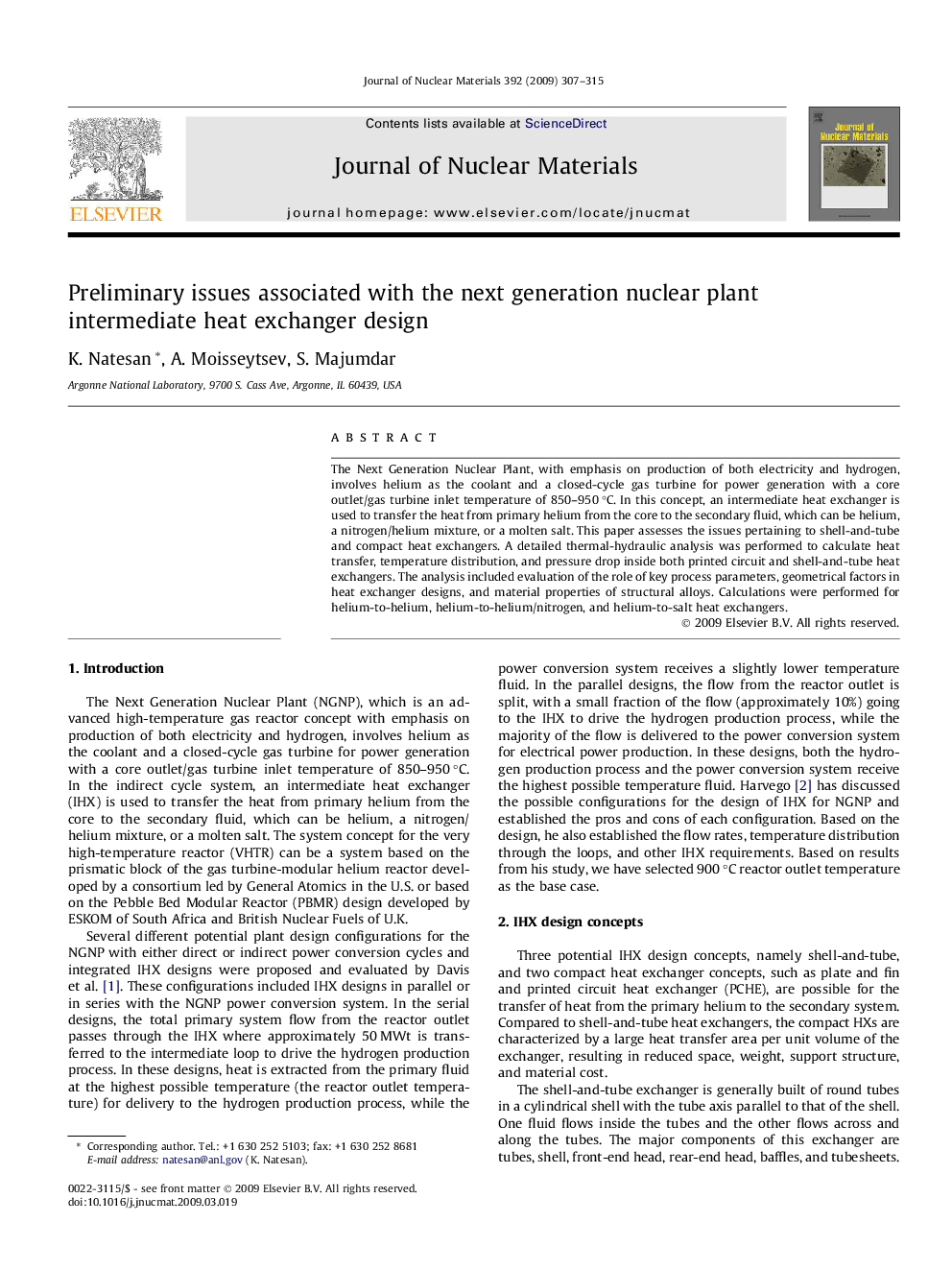| کد مقاله | کد نشریه | سال انتشار | مقاله انگلیسی | نسخه تمام متن |
|---|---|---|---|---|
| 1568428 | 999894 | 2009 | 9 صفحه PDF | دانلود رایگان |

The Next Generation Nuclear Plant, with emphasis on production of both electricity and hydrogen, involves helium as the coolant and a closed-cycle gas turbine for power generation with a core outlet/gas turbine inlet temperature of 850–950 °C. In this concept, an intermediate heat exchanger is used to transfer the heat from primary helium from the core to the secondary fluid, which can be helium, a nitrogen/helium mixture, or a molten salt. This paper assesses the issues pertaining to shell-and-tube and compact heat exchangers. A detailed thermal-hydraulic analysis was performed to calculate heat transfer, temperature distribution, and pressure drop inside both printed circuit and shell-and-tube heat exchangers. The analysis included evaluation of the role of key process parameters, geometrical factors in heat exchanger designs, and material properties of structural alloys. Calculations were performed for helium-to-helium, helium-to-helium/nitrogen, and helium-to-salt heat exchangers.
Journal: Journal of Nuclear Materials - Volume 392, Issue 2, 15 July 2009, Pages 307–315